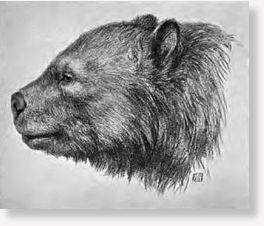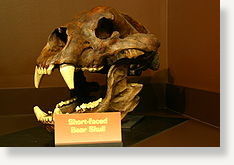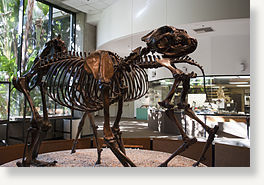
The bear stood eleven feet tall and is estimated to have weighed between 3500 and 3855 pounds.
The size of the specimen is related to the lack of competitive species at the time. The bear is dated to the Pleistocene era and could be 500,000 to 2 million years old.
The bear is a South American giant short-faced bear (Arctotherium angustidens).
The fossils showed signs of serious injury that may be the result of mating competition or prey activity as a hunter or as prey for the only other carnivore that lived in the region, the saber toothed cat.
The bear is considered to be omnivorous and may have been more of a scavenger that a predator.
The bear was found in Ensenadan sediments in Buenos Aires Province, Argentina. The remains were unearthed during the construction of a hospital in La Plata City, Argentina.
Paper
The Largest Known Bear, Arctotherium angustidens, from the Early Pleistocene Pampean Region of Argentina: With a Discussion of Size and Diet Trends in Bears
Leopoldo H. Soibelzon 1,2 and Blaine W. Schubert 1
1 Consejo Nacional de Investigaciones Científicas y Técnicas (CONICET), División Paleontología de Vertebrados, Museo de La Plata, Paseo del Bosque, B1900FWA La Plata, Buenos Aires, Argentina
2 Department of Geosciences and Don Sundquist Center of Excellence in Paleontology, Box 70357, East Tennessee State University, Johnson City, Tennessee 37614, USA





Reader Comments
to our Newsletter